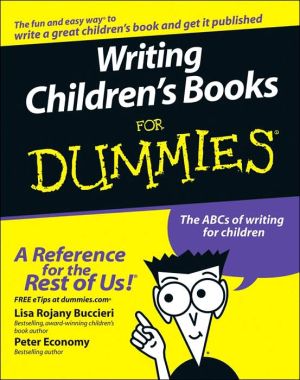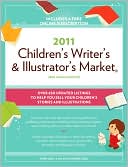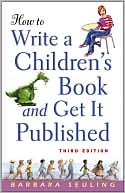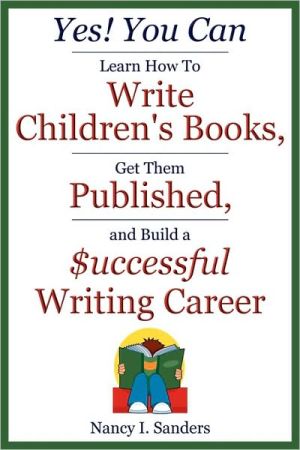Writing Children's Books For Dummies
Everyone loves a children's book. And many dream about writing one. But is it actually possible for an unpublished writer—armed with a good story idea and a love of kids—to write, sell, publish, and promote a book? Yes, it is! Veteran children's book publishing executive and author Lisa Rojany Buccieri and author Peter Economy show you how, in their incredibly useful 2005 first edition of Writing Children's Books For Dummies®.\ Buccieri and Economy begin by explaining the basics of the...
Search in google:
Everyone loves a children's book. And many dream about writing one. But is it actually possible for an unpublished writer—armed with a good story idea and a love of kids—to write, sell, publish, and promote a book? Yes, it is! Veteran children's book publishing executive and author Lisa Rojany Buccieri and author Peter Economy show you how, in their incredibly useful 2005 first edition of Writing Children's Books For Dummies®. Buccieri and Economy begin by explaining the basics of the children's book business, from the nuts and bolts of the various formats and genres—with helpful illustrations to aid you—to the intricacies of the book publishing market, a list of recent award-winning books, and a first peek into the particular mind set that writing children's books requires. (Hint: Throw out the adult rules, and think like a kid!) Then the authors dive into the actual writing process itself, with tips on setting up a workspace, brainstorming great book ideas, researching the subject you decide on, even speaking with the sorts of kids you hope will eventually read the book. They show you how to create compelling characters and develop them in the manuscript; how to outline and write a plot "arc" of conflict, change, and resolution; how to master the difficult art of writing dialogue; and how to use active (rather than passive) language to keep your story moving along and interesting to young minds. Or, if you're planning to write a creative nonfiction children's book—on a topic such as science, nature, or a historical figure, for example—the authors include a chapter on this, too. Ready, set, go… it's timeto sit down and write! Once you've finished your book, however, the process has only begun. Now you will refine, submit, and hopefully sell your manuscript. Here again, the authors of Writing Children's Books For Dummies come through for you. They deliver solid advice on hiring an illustrator—or not; participating in workshops and conferences to learn the business and hone a story; finding an agent; and, finally, submitting the manuscript to publishers and—if you are successful—signing a contract. Along the way, the authors also include tips on handling rejection; a quick primer on the various editors in publishing houses (and how they work to make your book its best); and making a plan to publicize the book, including hiring a publicist if necessary. Like all For Dummies® books, Writing Children's Books For Dummies highlights "The Part of Tens," which includes the Ten Best Ways to Promote Your Story and More Than Ten Great Sources for Storylines. And the ever-helpful Cheat Sheet includes Tips for Editing your Children's Book Manuscript, Children's Book No-No's, Twelve Commandments for Writing Younger Children's Books, and Tips on Promotion. From setting down that first word on paper to doing a successful publicity tour, Writing Children's Books For Dummies gives you the confidence and the insiders' know-how to write and sell the story you've always wanted to write.
Click to read or download
Introduction. Part I: The ABCs of Writing for Children. Chapter 1: The Basics of Writing Children’s Books. Chapter 2: Children’s Book Formats and Genres. Chapter 3: Understanding the Children’s Book Market. Part II: Immersing Yourself in the Writing Process. Chapter 4: Setting Up Your Workspace. Chapter 5: Starting with a Great Idea. Chapter 6: Researching Your Audience and Subject. Part III: Creating a Spellbinding Story. Chapter 7: Creating Compelling Characters. Chapter 8: The Plot Thickens: Conflict, Climax, and Resolution. Chapter 9: Can We Talk? Writing Dialogue. Chapter 10: Setting the Scene. Chapter 11: Finding Your Voice: Point of View and Tone. Chapter 12: Writing Creative Nonfiction and How-To Books. Part IV: Making Your Story Shine. Chapter 13: Editing and Formatting Your Way to a Happy Ending. Chapter 14: To Illustrate or Not to Illustrate. Chapter 15: Finding Feedback and Encouragement. Part V: Getting Published and Promoting Your Book. Chapter 16: Getting an Agent to Represent You. Chapter 17: Finding the Perfect Publisher and Signing a Contract. Chapter 18: Following the Publishing Process. Chapter 19: Donning Your Publicity Cap. Part VI: The Part of Tens. Chapter 20: More than Ten Great Sources for Storylines. Chapter 21: Ten Best Ways to Promote Your Story. Index.







